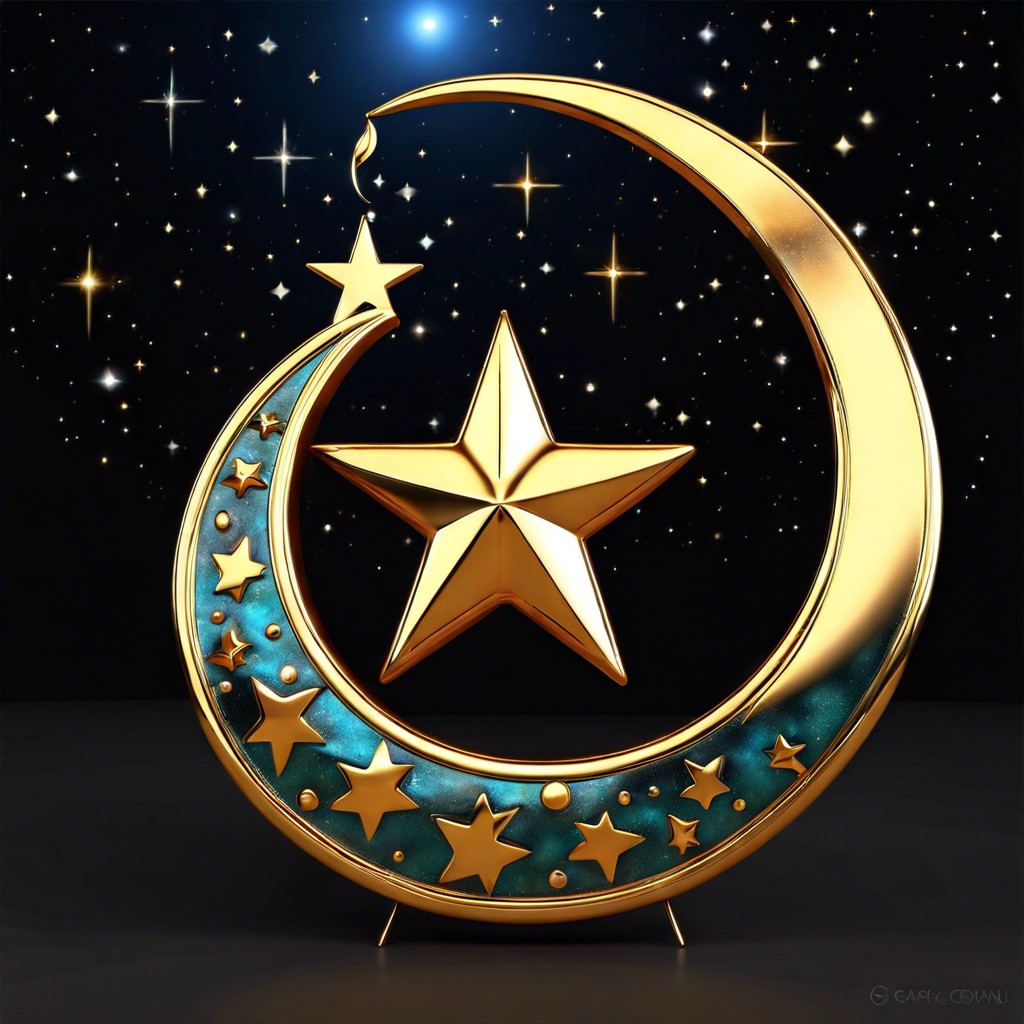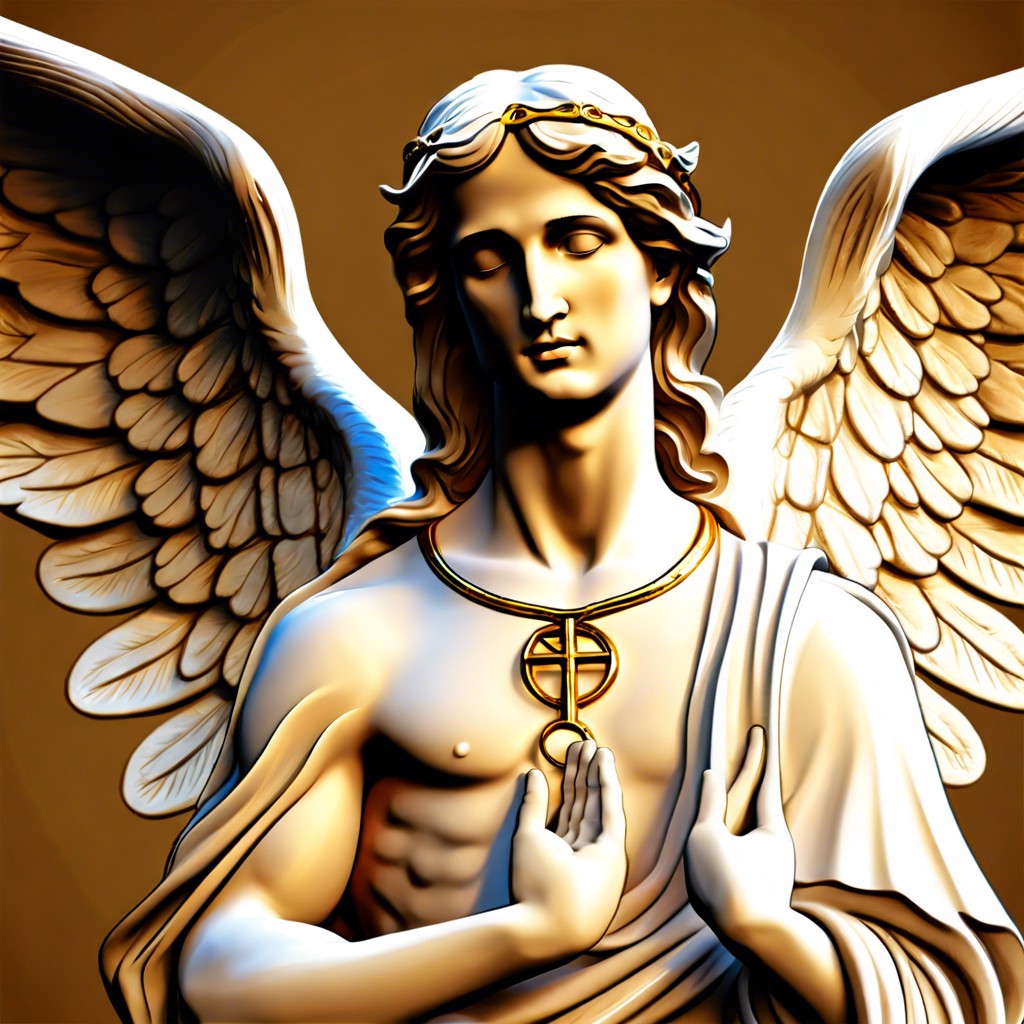Discover the spiritual meaning and symbolism behind the star and crescent, often associated with many cultures and religions.
The star and crescent, an image steeped in history and diverse meanings, fascinates many. Whether you’re curious about its ancient origins, its profound cultural and religious significance, or its role in modern symbolism, this article delves into every aspect. Explore common misconceptions and understand why this emblem means so many different things to different people.
Key takeaways:
- Origin: Symbol dates back to ancient Near East, Mesopotamia.
- Cultural: Represents heritage, fortune, unity across many nations.
- Religious: Predates Islam, intertwined with Ottoman Empire history.
- Modern: Evolved into symbols on national flags, representing nations.
- Misconceptions: Not exclusive to Islam or Ottoman Empire universally.
Historical Background

Originating in the ancient Near East, the star and crescent symbol has been used for thousands of years. Initially, it was associated with various ancient deities, particularly from Mesopotamia. In Babylon, for instance, the crescent moon was linked to the moon god, Sin.
Later, the symbol became prominent in the Byzantine Empire. It adorned flags and coins, symbolizing the city’s protection under the goddess Artemis. When the Ottoman Empire rose to power, they adopted the symbol, embedding it deep into Islamic culture.
From ancient deities to powerful empires, the star and crescent have an intricate history, reflecting a tapestry of cultural exchanges and influences across eras.
Cultural Significance
In various cultures, the star and crescent hold deep, fluid meanings. It’s most strongly associated with the Ottoman Empire and symbolizes a powerful historical connection to Turkish heritage.
In some Asian cultures, this symbol can represent good fortune and protection. It has also appeared in the flags of many different nations and regions, illustrating unity or shared beliefs.
Artists and designers frequently incorporate it into their work to evoke feelings of mystery and wonder, bridging ancient traditions and modern creativity.
Interestingly, while commonly linked to Islamic culture, its roots predate Islam, showing its diverse cultural tapestry.
Religious Associations
The star and crescent are often associated with Islam, but their origins predate the religion by centuries. They were used in ancient civilizations like Byzantium and Sumeria before being adopted by the Ottoman Empire.
Key points:
- Islamic Symbol: While not originally from Islam, the Ottoman Empire popularized this symbol within the faith.
- Eid and Ramadan: Many Muslims now see it as a representative of these holy times due to the lunar calendar.
- Misinterpretation: Some think it’s the official symbol of Islam, but many Islamic traditions do not use it universally.
- Global Presence: Nations with significant Muslim populations, like Turkey and Pakistan, have incorporated it into their flags, solidifying its modern religious association.
Symbolism in Modern Times
Today, the star and crescent frequently appear on national flags, most notably that of Turkey and Pakistan. These symbols have evolved, transcending their ancient and religious roots to represent modern national identity.
In branding and logos, the star and crescent can symbolize new beginnings and growth. They often evoke a sense of guidance and hope.
In popular culture, they appear in various forms of art, conveying mystery, femininity, and celestial wonders.
For some, the symbol still holds spiritual significance, representing harmony between celestial and earthly realms.
Common Misconceptions
Contrary to popular belief, the star and crescent symbol is not exclusively Islamic. It predates Islam, having roots in ancient civilizations like Byzantium and Mesopotamia.
Another common misconception is associating it solely with the Ottoman Empire. While the Ottomans did popularize its use, the symbol’s history is more extensive.
Many think the star and crescent represent Islamic unity. In reality, different Islamic countries often have distinct symbols and flags.
It’s not a universal emblem of the Muslim world. Some Muslim-majority countries do not feature it on their flags or national symbols at all.





